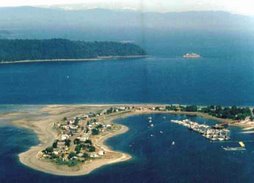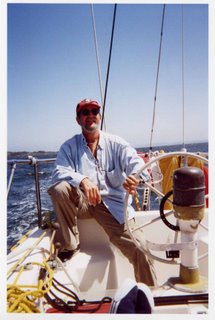RANDOM NOTES ON RADIOTELEPHONE TIPS
By Captain James F. Barn CD
VTS (Vessel Traffic Services) is the arm of the CCG which aids the safety of shipping throughout
Let me assure you that it is not necessary to participate in the Service, we can listen but we may also utilize the channel for navigational/identification and other uses simply by keying the mike and using the proper procedure.
For instance if you observe a larger or commercial vessel with which you wish to exchange information this can be done simply and effectively.
Having been listening on the circuit, you may be aware (by previous VTS conversations) the vessel's callsign... .call the vessel .. .inform her who and where you are in relation to that vessel and .. .ask or exchange your information. OR
If you do not know who the vessel is... .call the VTS and inform of your position (geographical) and where the mystery vessel is situated in relation to your position.. ..VTS will identify that target for you and you may then communicate directly.
COMOX TRAFFIC CH#71 will assist you all the way to
TOFINO TRAFFIC CH#74 will assist you all the way to Juan de Fuca
Please leam how to use Distress, Urgency and Safety Signals and do not be timid on the use of your VHF Radio.
Consider buying a copy of Radio Aids to Marine Navigation plus a copy of List of Lights Buoys and Fog Signals (Pacific Coast) keeping this one corrected is simple and will let you get much longer use from those dog-eared charts we all keep under the for'd berth.
Channel 16 is, as we all know, a distress/calling frequency, commercial vessels for the large part only listen to this frequency but guard the Traffic frequency, I firmly believe if you start making it a habit of utilizing Traffic Services it will make all your outings more pleasant, professional and safe.
Hope these small tips help.
Jim
S/V WHIMSY II
Captain JFBnin CD
DEEP BAY


No comments:
Post a Comment